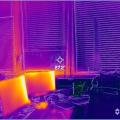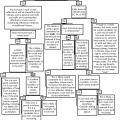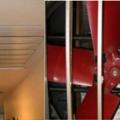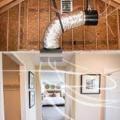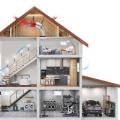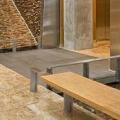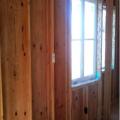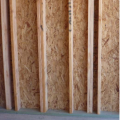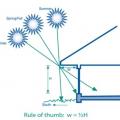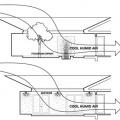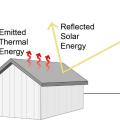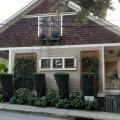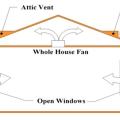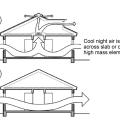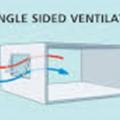Showing results 151 - 179 of 179
This infrared image shows little heat gain from north-facing double-pane windows with blinds, but significant heat output from computer monitors
This MSHP operates with 120 volts power, has an EER of 18 Btu/Wh, uses about 800 W at full output, and operates remotely with a smart home control system
This room has several passive and low-energy cooling features including a ceiling fan, fully operable French doors, window shading, an outdoor water feature, and light-colored hard-scaping.
This search for metal roofing products on the CRRC Rated Roof Products Directory highlights the initial and 3-year aged SRI values for each product
This simplified decision tree can help a homeowner or contractor assess how appropriate a cool roof or wall will be for a particular home
This wall and window assembly has excessive framing around the windows, which can lead to heat gain in how climate zones.
This whole house fan is suspended from rafters and connected to the intake grille by a curved insulated duct, greatly reducing vibration and noise in the occupied space
This whole-house fan is suspended from rafters and connected to the intake grille by a curved acoustic duct, greatly reducing vibration and noise in the occupied space
Use a truss joist header assembly as shown here to reduce thermal bridging in hot climate zones.
Using outdoor misters or spray fountains can cool the outside air before it enters the house
Using roof and wall materials with a high Solar Reflectance Index (SRI) will reduce heat gains.
Vertical trellises and tall shrubs provide very effective shading to the east-facing wall of this home.
Vines growing on vertical trellises, along with tall shrubs, provide very effective shade for the east side of this house.
Wall surfaces having high solar reflectance and high thermal emittance will remain cooler when exposed to direct sunlight.
When averaged over several years, more fatalities are caused by extreme heat than by any other weather-related hazard
When preserving a tree, construct a temporary fence around the tree canopy and post signs to keep out vehicles that might compact soil and construction waste that could contaminate the soil.
White walls and roofs; overhangs and awnings; and operable shutters and garden walls all help to keep out unwanted solar heat gain providing cool interiors for this Florida home.
Whole-house fans draw outside air through windows into the home and exhaust it into a vented attic
Whole-house fans or wind-driven cross ventilation can be used to draw air across thermal mass for a night flush strategy
Wrong - this building provides no overhangs, minimal window shading, and clear window glass resulting in high solar heat gain.
Wrong – The south side of this building in Arizona has very little architectural or landscape shading to block solar heat gain.
Wrong – This multi family building appears to be done in traditional southwest architecture but the lack of useful overhangs, dark colored walls, and lack of tinting on windows will result in significant solar heat gain.
Wrong: Single sided ventilation without at least two windows, wing walls, and predictable wind directions is ineffective for generating wind-driven crossflow.
